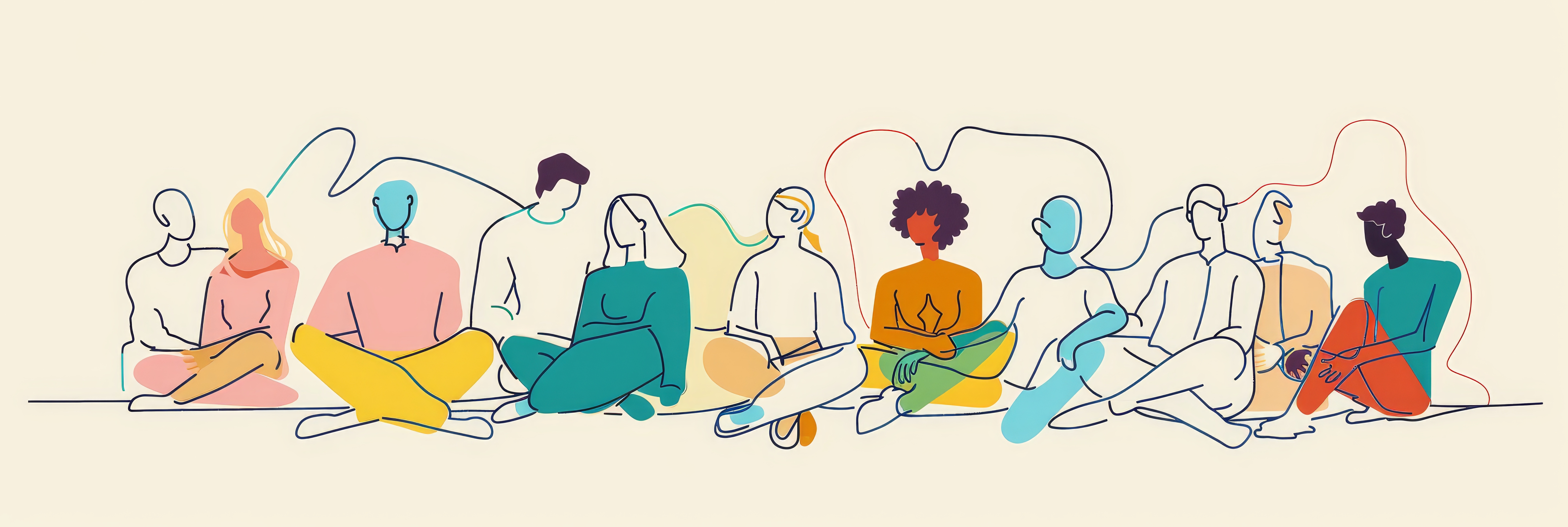When someone struggles with persistent worries about how their body looks, those thoughts can become all-consuming. This intense preoccupation — known as body dysmorphic disorder — can lead to profound distress, isolation, and, in many cases, disordered eating behaviors. While body dysmorphia and eating disorders are distinct conditions, they often overlap in both experience and cause. Understanding how they connect can be an important step toward healing.
Understanding Body Dysmorphic Disorder
Body dysmorphic disorder (BDD) is a mental health condition in which a person becomes fixated on one or more perceived flaws in their appearance — flaws that may be minor or even invisible to others. These perceived imperfections can cause significant distress and interfere with daily life.
BDD affects approximately 1.7% to 2.9% of the general population, and it occurs equally among men and women. However, studies suggest it is particularly common among people diagnosed with eating disorders such as anorexia nervosa or bulimia nervosa.¹
Common symptoms of body dysmorphic disorder include:
-
Obsessively checking mirrors or avoiding them altogether
-
Excessive grooming or comparing one’s appearance to others
-
Engaging in repetitive behaviors, such as skin picking or reassurance-seeking
-
Believing one looks “ugly,” “disfigured,” or “fat” — even when others disagree
These thoughts and behaviors are not vanity. They’re symptoms of a serious psychiatric disorder that requires compassion, understanding, and professional care.
The Shared Core: Body Image Distortion
At the heart of both BDD and eating disorders lies body image distortion, a deeply ingrained belief that one’s body is flawed or unacceptable. For those with anorexia nervosa, this may manifest as seeing themselves as overweight even when severely underweight. For someone with body dysmorphic disorder, the focus might be on a specific body part such as the nose, skin, or stomach.
Both conditions are linked to heightened activity in brain regions responsible for visual processing and emotional regulation, including the orbitofrontal cortex and amygdala.³ This means the perceptions of people with these disorders feel entirely real, even when those perceptions don’t match reality.
This isn’t a matter of choice or vanity. It’s a neurobiological and psychological cycle that reinforces shame and self-criticism. Without treatment, the resulting distress can lead to extreme and even dangerous behaviors like restrictive eating, compulsive exercise, purging, or body checking.
How Body Dysmorphia Fuels Disordered Eating
For many people, body dysmorphia becomes a trigger or a maintaining factor in eating disorders. When someone believes their body is “wrong,” they may turn to food restriction, fasting, or excessive exercise to “fix” or control it.
In one systematic review published in the Journal of Eating Disorders, researchers found that individuals with co-occurring BDD and eating disorders experienced higher body dissatisfaction and more severe eating pathology than those with an eating disorder alone.⁴ This means that body dysmorphia can intensify the symptoms and emotional suffering of eating disorders, making recovery more challenging.
Some of the most common overlaps between body dysmorphia and anorexia nervosa include:
-
Obsessive weighing or measuring of body parts
-
Avoidance of social situations involving food or body exposure
-
Rigid rules about “good” and “bad” foods
-
Persistent anxiety about gaining weight
Without intervention, these behaviors can lead to serious medical complications, including malnutrition, heart irregularities, and long-term psychological distress.
The Role of Shame + Perfectionism
Both body dysmorphia and eating disorders are often fueled by perfectionism and shame. Many individuals hold a deeply internalized belief that their worth is directly tied to their appearance. Cultural pressures (such as the glorification of thinness or “ideal” beauty standards) only reinforce these distorted thoughts.
According to a meta-analysis published in Eating Behaviors, perfectionism is significantly associated with both body dissatisfaction and eating pathology across clinical and non-clinical populations.⁵ This highlights the importance of addressing not only body image but also underlying ideas about self-worth and emotional regulation in treatment.
Healing the Connection: Treatment + Hope
The good news is that both body dysmorphic disorder and eating disorders are treatable. At Selah House, a treatment center for eating disorders in Indiana, comprehensive care typically involves a multidisciplinary approach, including medical monitoring, psychotherapy, and, at times, medication.
Cognitive behavioral therapy (CBT) and exposure and response prevention (ERP) are highly effective for BDD, helping individuals challenge distorted beliefs and reduce compulsive behaviors. For eating disorders, CBT-E (enhanced CBT), dialectical behavior therapy (DBT), and family therapy are commonly used to promote healthier relationships with food and body image.
In both cases, compassionate support plays a central role. Healing is not about learning to love every inch of one’s body overnight — it’s about building a more peaceful and realistic relationship with oneself.
Faith-Based Recovery at Selah House
If you or someone you love is struggling with body image issues or disordered eating, compassionate, professional eating disorder treatment can help restore physical, emotional, and spiritual balance.
At Selah House, healing is rooted in both clinical excellence and Christ-centered care. Our multidisciplinary team integrates evidence-based therapies with spiritual guidance, helping clients address the emotional, behavioral, and spiritual wounds that sustain body image disturbance and eating disorders.
Whether you’re entering treatment for the first time or continuing your recovery journey, Selah House offers a safe, restorative environment where clients can pause, reflect, and heal in body, mind, and spirit.
Contact us today to learn how our compassionate, faith-based programs can help you build lasting recovery through grace, connection, and professional support.
References
-
Phillips, K. A. (2021). Body dysmorphic disorder: Advances in research and clinical practice. American Psychiatric Publishing.
-
Ruffolo, J. S., Phillips, K. A., Menard, W., Fay, C., & Weisberg, R. B. (2006). Comorbidity of body dysmorphic disorder and eating disorders: Severity of psychopathology and body image disturbance. International Journal of Eating Disorders, 39(1), 11–19.
-
Feusner, J. D., Yaryura-Tobias, J. A., & Saxena, S. (2008). The pathophysiology of body dysmorphic disorder. Body Image, 5(1), 3–12.
-
Hartmann, A. S., Thomas, J. J., Greenberg, J. L., & Wilhelm, S. (2013). How much do eating disorder and body dysmorphic disorder symptoms overlap? A systematic review and meta-analysis. Journal of Eating Disorders, 1(1), 11.
-
Limburg, K., Watson, H. J., Hagger, M. S., & Egan, S. J. (2017). The relationship between perfectionism and psychopathology: A meta-analysis. Eating Behaviors, 27, 1–16. https://doi.org/10.1016/j.eatbeh.2017.08.003

 Call
Call

